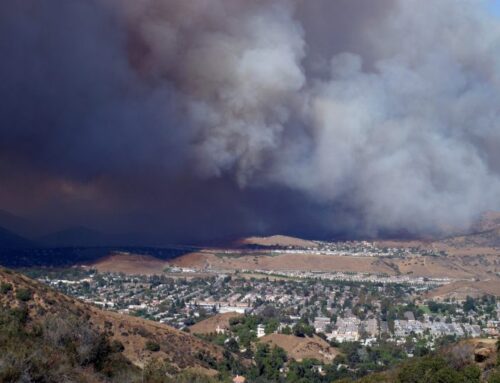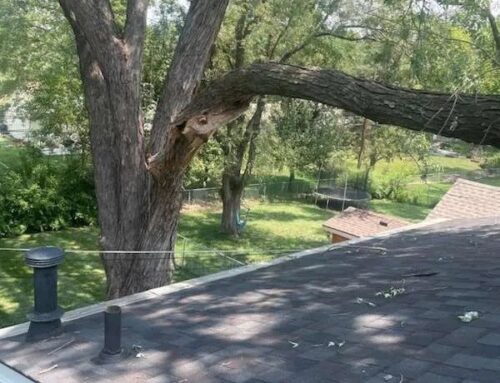So, you had to remove a tree. Maybe it was old and decaying, leaning dangerously over your home, or simply in the wrong spot. Now, in its place, you’re left with a big, gaping hole and possibly a sense that something’s missing. A tree added beauty, shade, and maybe even privacy to your space. You’re wondering: Can I just plant a new tree right where the old one was?
In many cities, replanting may even be required after tree removal, especially if you had a permit for the removal. But before you plant that new baby tree, let’s talk about everything you need to consider for tree planting success.
Why Replanting Isn’t Always Easy
It might seem straightforward—one tree out, one tree in. But replanting in the exact same spot can be trickier than it looks. Here’s what you need to know before dropping a new tree in that hole.

Root Interference and Soil Compaction
Let’s talk roots. When you remove a tree, especially a large or mature one, you’re often left with a widespread underground root system. Unless the stump and roots have been completely ground out and removed, they can interfere with the growth of your new tree. Plus, nearby trees may still have extended root zones that compete for space and nutrients.
Another concern? Soil compaction. Tree removal, especially when heavy equipment is involved, can compress the soil, squeezing out air pockets and making it difficult for a new tree’s roots to penetrate.
Nutrient Depletion and Soil Chemistry Issues
Over the years, your old tree may have gobbled up much of the available nutrients in the soil, leaving it depleted and tired. This means the soil may no longer support healthy new growth—at least, not without some help.
Before you plant again, it’s smart to do a soil test. This gives you insight into nutrient levels, pH balance, and any underlying issues. Based on the results, you can add compost, fertilizers, or other soil amendments to give your new tree the best possible start.
Is It Ever Okay to Replant in the Same Spot
Yes—sometimes you can replant in the same spot. But it really depends on the specific conditions of your site and how the removal process was handled.

Cases Where It Might Be Possible
- The removed tree was relatively small and didn’t leave a dense or sprawling root system.
- You’ve thoroughly ground down the stump and cleared out most of the old roots.
- There’s enough room for your chosen tree species to establish itself comfortably.
- You’ve tested and improved your soil quality.
In these cases, replanting in the same spot might work just fine.
When to Choose a New Planting Location
However, you might want to relocate your new tree if:
- The stump or roots couldn’t be removed due to limited access (like a narrow side yard or steep hillside).
- The soil is so poor it would take serious time and effort to revive.
- There isn’t enough space for your new tree to spread out and thrive.
- The previous tree had a disease (like root rot or wilt), and you’re planning to replant with a species that’s vulnerable to the same issue.
In these situations, it’s usually best to plant a new tree a few feet away from the original site—or even in a completely different part of your yard.
How to Prepare the Site for Replanting
If you’ve decided to plant in or near the original location, the way you prepare the site can make a huge difference in the tree’s long-term health. If you’re hungry for more tips, check out these tree planting do’s and don’ts!

Stump and Root System Removal
Proper stump and root grinding is key. If you don’t remove the old root system, it can restrict new roots from growing and even attract pests or fungus. Removing stumps is no small task—it often requires specialized equipment and expertise. This is a great time to call in a professional who can handle the job safely and efficiently.
Soil Amendment and Recovery
Once the site is clear, focus on rebuilding the soil. Add compost or organic matter to improve soil structure and microbial life. If needed, use slow-release fertilizers to replenish nutrients, but avoid fertilizing immediately after planting. Your new tree needs time to adjust and settle into its new home without being overwhelmed.
At A Plus Tree, for example, we jump-start new plantings with a boost of liquid biochar, microbial inoculants, and organic matter—natural ingredients that enrich the soil and promote strong, healthy root development right from the start.
Ideal Timeframes for Replanting After Tree Removal
Timing is everything when it comes to successful planting. The best time of year to plant trees depends on your climate and location, but in general:
- In mild or coastal climates, fall and early spring are ideal. This gives the tree time to establish roots before summer heat arrives.
- In colder regions, early spring is usually the best time, once the ground has thawed.
- Avoid planting during peak summer unless you’re committed to consistent watering and care.
If you’re unsure, ask your local arborist when planting conditions are best in your area.
Choosing the Right Tree for Replanting
Picking the right tree is just as important as choosing the right spot. Consider:
- Mature size – Will the tree fit comfortably in the space once fully grown?
- Aesthetics – Do you want fall color, flowers, or evergreen foliage?
- Growth rate – Do you want something that grows fast, or are you okay with waiting?
- Maintenance – How much pruning, watering, and cleanup are you willing to take on?
- Site conditions – How much sunlight does the area get? How’s the drainage? Do you have irrigation?
When in doubt, talk to a professional arborist for recommendations on trees that will thrive in your specific site conditions.
When to Hire a Professional Tree Planting Service
Tree planting might seem easy, but if you’re:
- Planting a large or mature tree,
- Working in a tight or tricky spot,
- Replacing a tree removed due to disease,
- Or just want to get it done right the first time—
It’s worth calling in the pros.
Professional tree services like ours have the equipment, experience, and knowledge to make sure your tree is planted correctly and set up to thrive. From stump removal to soil prep to tree selection, we can handle the heavy lifting and ensure your tree gets a healthy head start.
Conclusion: Can You Successfully Plant a Tree Where One Was Removed?
Yes—with the right prep, planning, and care, you can plant a tree where one was removed. But it’s not always as simple as digging a hole and dropping in a new tree. Assess the site, and make sure your new tree has what it needs to grow and thrive. If in doubt, reach out to us for professional help!





